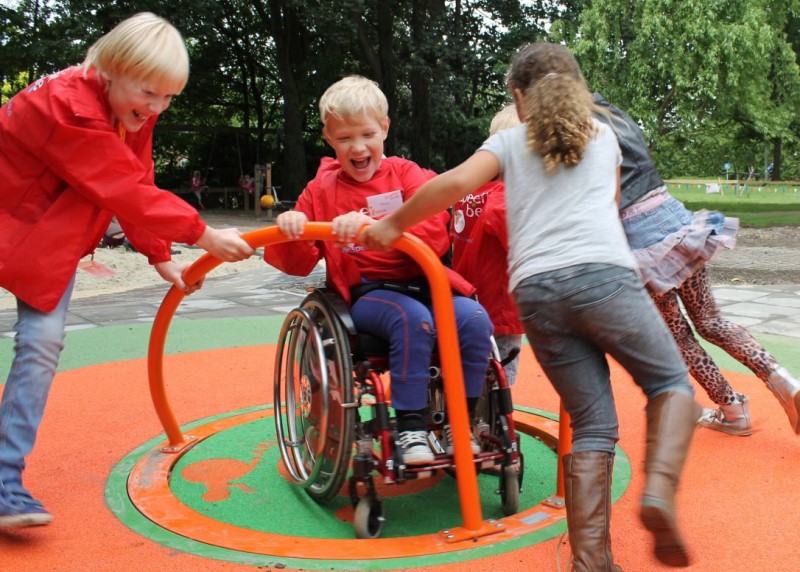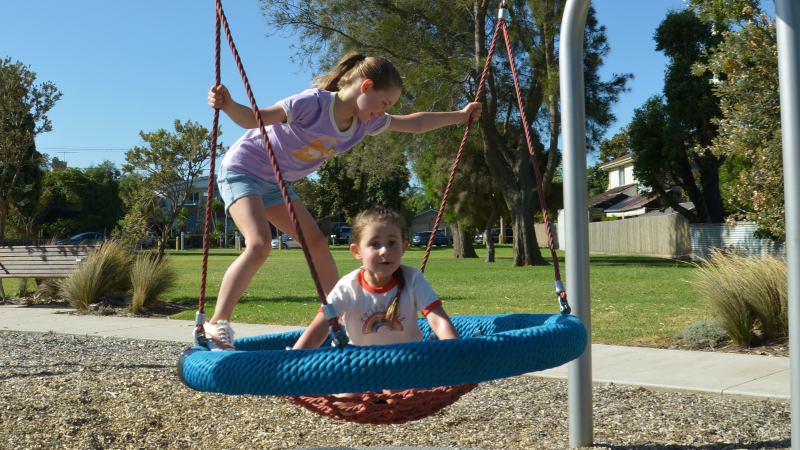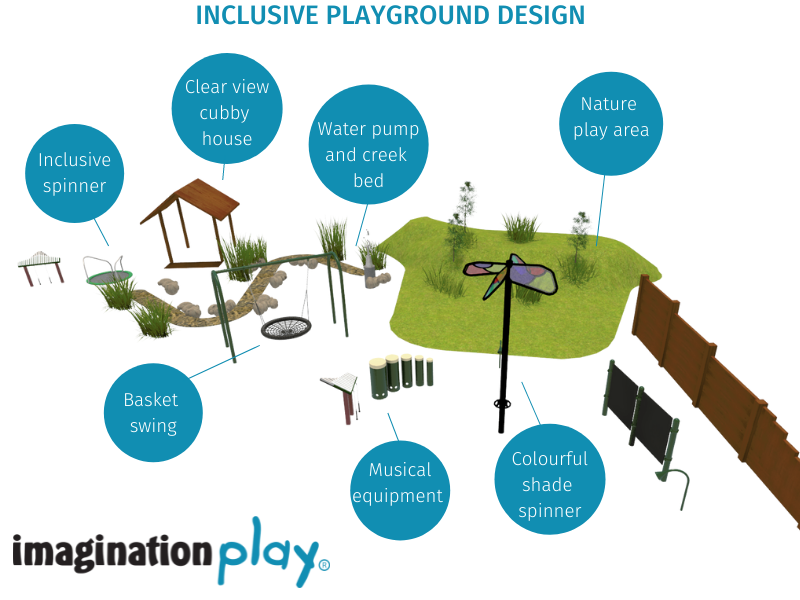
In Australia, almost 20% of the total population (ABS 2019) and 1 in 10 children experience some form of disability (AIHW 2020). If you also include care givers, there is currently a large portion of the population who may struggle to access publicly available play spaces. The value of play during childhood can not be understated. Recognised as a human right of every child (United Nations, 1989), play is critical for cognitive development. It helps to shape our approach the world, it is where we learn to interact with each other and work to overcome problems.
The importance of creating inclusive play spaces in Australia is gaining recognition. There are multiple grants available for Australian schools to improve inclusion in play spaces. But what does ‘inclusive play’ truly mean, and how to we, as designers, ensure our designs are meeting the needs of all people in our community?
Inclusive means all people can not only access, but derive value and enrichment from play spaces. It needs to consider the needs of all types of groups. What are the physical limitations being experienced? What are the sensory needs of different people? How can we shape a space that delivers all the benefits of play in a way that can be easily accessed by all?
Designers need to consider the physical and social abilities of:
- Typically developing children
- Children with neurological disabilities such as autism.
- Children who have intellectual disabilities such as Down syndrome, foetal alcohol syndrome.
- Children who require wheelchairs or other medical equipment.
- Children with physical disabilities.
- Children with social and/or emotional difficulties.
- Family, siblings, parents, grand-parents etc.
- The community: friends, caregivers, teachers, etc.
- Adults with disabilities

The 7 Inclusive Design Principles.
At imagination Play, we always consider the 7 inclusive design principles when creating an inclusive play space. Developed in the US by PlayCore, and informed by research conducted by the university of UTAH, the 7 inclusive design principles consider if a playground is:
- Fair. Is there an opportunity for everyone to derive value from the play space regardless of age or ability?
- Included. Ensure there is flexibility in how structures can be interacted with, considering differing levels of movement or sensory input.
- Smart. The cognitive and social benefits of play should inform the playground designs, with the needs of all considered. Designs should aim to encourage longer play engagement.
- Independent. The playground design needs encourage unaided independent play as well as group play with clear points of entry and exit as well as points for observation.
- Safe. A playground must meet the required safety standards, ensuring care is taken to consider and overcome any potential hazard.
- Active. The playground design needs to meet the physical demands of everybody. It needs to provide a range of challenges for all needs and encourage cooperative play and socialising.
- Comfortable. Inclusive design should consider putting all the users at easy. Shade, seating, access points and clear line of sight will encourage people to interact with the play space for longer.

Design Case Study: CIRE Children’s services, Mount Evelyn.
Above all, the needs of each client need to be taken into account during the design process. What are the features of the space you will be working with? What is the budget available and how can we help you make the best use of it? Every playground will serve the needs of a unique community, made up of distinct characteristics and diverse needs.
Cire Children’s Services in Mount Evelyn, Victoria, wanted a play space that provided for the children and families of their school community. The space needed to interact with the environment and provide a safe access point for nature play, while remaining easy to supervise. The community comprised of typically developing children, children with neurological differences needing sensory play and stimulation as well as children with limited physical abilities also needed a physical challenge that incorporated social interactions. A space for unstructured play, where children could explore and cooperate together was also part of the design brief.

How you can improve the inclusive play design aims in your next playground project:
With so many grants available for improving the inclusiveness of playground facilities in schools across Australia, it is important to put together a considered proposal that takes into account the specific needs of the community the playground will directly serve. Start by talking with your community to find out more about their needs and how you can best accommodate them in the design process. The next step is to look at the available space and consider entry and exit points, what structures or facilities are already in place, and if the surface will need to be prepared for easy access. Take a measurement of the space and take note of the physical shapes in the landscape.
The biggest step is getting the budget sorted. If you are applying for a grant, carefully address all the key points in the grant proposal and ensure the benefits to the community you represent are clearly outlined. If you are relying on fundraising or council approved funds then ensure your design and proposal highlights how the money will be spent and what the end results will be.
Planning and designing a playground requires professional advice and help! The team at Imagination Play have worked closely with schools, councils and landscape designers for many years to create truly inclusive playground designs. We design, manufacture and install, commercial grade playground equipment right across Australia.
For help designing your inclusive playground project, talk to our team today!
References:
- https://humanrights.gov.au/our-work/publications/national-inquiry-employment-and-disability-issues-paper-1#:~:text=Almost%2020%20per%20cent%20of,females%20report%20having%20a%20disability.
- https://www.accessibleplayground.net/wp-content/uploads/2016/05/Inclusive-Play-Design-Guide-LowRes-2.pdf
- https://files.eric.ed.gov/fulltext/EJ814505.pdf
- https://www.playcore.com/programs/me2
- Office of the United Nations High Commissioner for Human Rights. Convention on the Rights of the Child. General Assembly Resolution 44/25 of 20 November 1989. Available at: www.unhchr.ch/html/menu3/b/k2crc.htm. Accessed June 22, 2006
- https://publications.aap.org/pediatrics/article/119/1/182/70699/The-Importance-of-Play-in-Promoting-Healthy-Child
